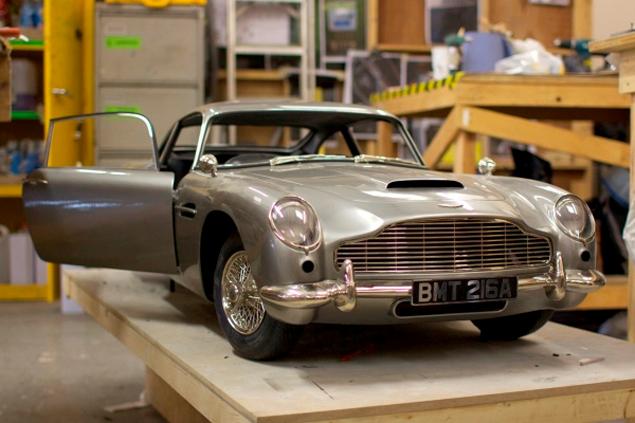
Aston Martin DB5 model built using AM for the latest Bond flick, Skyfall. Courtesy of Propshop Modelmakers Ltd.
Latest News
November 14, 2012
In the course of my diligent efforts to keep you good people up to date on the state of additive manufacturing, I come across many interesting news items. I’ll gather them up every so often and present them in a Rapid Ready Roundup (like this one). You can find the last Roundup here.
Let’s have a shotgun start for today’s Roundup. Firearms manufacturer, Remington, has acquired TAPCO, manufacturer of firearms accessories and replacement parts. TAPCO has been in business for more than 25 years, so why has Remington just purchased the company? The answer is 3D printing.
Remington is looking to incorporate TAPCO’s 3D modeling and rapid prototyping expertise into the larger business. I’d expect to see other established companies with additive manufacturing (AM) experience get snapped up by bigger entities looking for a quick way to add AM to the design process.
“TAPCO has been in business for more than 25 years and has established market strength through its high quality U.S.-made products,” said George Kollitides, chairman and CEO of Freedom Group. “This acquisition will enhance our positioning in the accessories market and allow us to further our research and development capabilities.”
Moving on, Rapid Ready has previously covered NASA’s interest in AM, and the scientific organization continues to find new ways to utilize the technology. The Marshall Space Flight Center in Huntsville, AL, has purchased a selective laser melting (SLM) system from Concept Laser to produce end-use parts for its J-2X engine, which is still in development.
“This process significantly reduces the manufacturing time required to produce parts from months to weeks or even days in some cases,” said Andy Hardin, integration hardware lead. “It’s a significant improvement in affordability, saving both time and money. Also, since we’re not welding parts together, the parts are structurally stronger and more reliable, which creates an overall safer vehicle.”
Zooming back down to Earth, the U.S. Army Space and Missile Defense Command/Army Forces Strategic Command Future Warfare Center’s Innovative Ventures Office (that title is longer than some of my articles) has developed a lightweight and inexpensive 3D printer that fits in a backpack and can used in the field. Rapid Ready looked at a different use of AM by the Army earlier this year.
“The ability to replicate parts quickly and cheaply is a huge benefit to the warfighter,” said D. Shannon Berry, operations research analyst with the Innovative Ventures Office. “Instead of needing a massive manufacturing logistics chain, a device that generates replacement parts is now small and light enough to be easily carried in a backpack or on a truck.”
Last we come to Bond. James Bond. Skyfall is currently in theaters (I quite enjoyed it), and along with new villains, the movie sports an old friend in the form of an Aston Martin DB5. The production team was, quite reasonably, unwilling to risk damage to the nearly priceless original, so they contacted voxeljet to build a 1:3 model using AM.
In all, pieces for three different models were created and shipped to the UK, where Propshop Modelmakers Ltd. constructed and painted the models, including functional doors, chrome detailing and faux bullet holes. While I won’t risk spoiling anyone who hasn’t yet seen the movie, one model was later auctioned at Christie’s for nearly $100,000.
Below you’ll find a couple of videos. The first covers NASA’s newest use for AM, and the second takes a look at the Aston Martin DB5.
Sources: NASA, Military Times, New York Daily News, U.S. Army
Subscribe to our FREE magazine, FREE email newsletters or both!
Latest News
About the Author
John NewmanJohn Newman is a Digital Engineering contributor who focuses on 3D printing. Contact him via [email protected] and read his posts on Rapid Ready Technology.
Follow DE







